I suppose the title gives it away. Yep, I visited Scarborough. I didn’t go to the fair and I didn’t see one. I didn’t see any parsley, sage, rosemary or thyme and no-one lives there who’s a true love of mine!
Let’s start with the accommodation: a Youth Hostel (means any age allowed, in fact). Here’s the approach road (lane?) and the hostel at the far end.
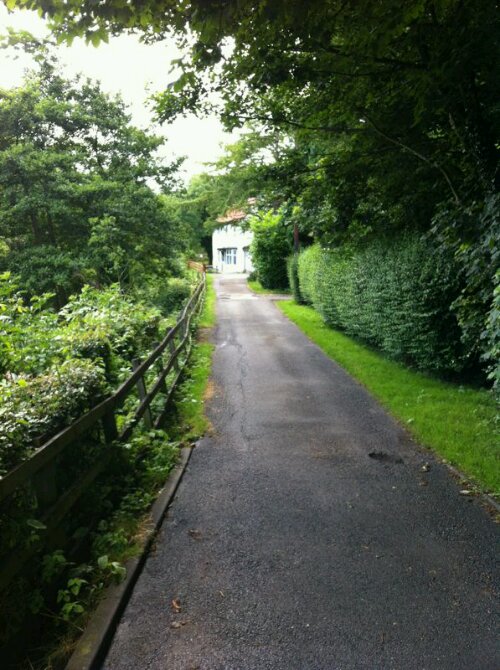
Arriving somewhat hungrily around 5pm, I decided to go for the full monty and booked an evening meal and a breakfast for the morning to go along with my plush bunk bed. Both were well cooked and I enjoyed someone else cooking for me. There were two of us for evening meal; the rest self-catered or went to the nearby pub. My co-eater, it turned out, was a cyclist down from Tyneside to do some trips out on the Moors. This 70 year old had cycled over 35 miles up hill and down dale that day!
So if I didn’t go to the fair, had I found it, and I didn’t get any spices, why was I there?
It’s a story that goes back over 200 years. I’m doing some family history research and have traced a set of great-great-great grandparents to an address in Scarborough. Now just so you get the idea on these relatives think of this: biologically, we each have 2 parents, 4 grandparents, 8 great grandparents, 16 great-great grandparents & 32 great-great-great grandparents. So I’ve found 2 of those 32! I had an address from the Census of 1841 and I wanted to see if anything remained of the area or even the street. Also I wondered if there might be any other local info about the time when they lived there.
My research day started with a walk from the Youth Hostel up the hill to the bus stop. I arrived in plenty of time and checked with the local who was already there that I was on the correct side of the road for where I wanted to go. The bus route was a circular one so I wanted to make sure I was not going to go the long way round. Then surprise, surprise we just started talking and ended up talking the whole time we were waiting for the bus to arrive. Seems like a friendly place I thought.
Once I’d arrived in the town centre, my first stop was the library for the academic research. I gave the lady in the library the name I was looking for and told her that I’d rung about 18 months ago to make some inquiries. She said she remembered the call! When I sounded surprised she said the name I’d asked about was very unusual for the town and that’s why she remembered it. I had a good 3 hours digging about in the old records and then set off for some sight-seeing looking for some of the places which would have been familiar to my distant relatives.
First stop was street where the folks from long ago lived. It was still there although the original housing has gone. However some features are still there and it was interesting to see that the steps leading to the upper part of town and to the church where they got married are still there. They must have walked them many times. It somehow felt as if I had some connection although I’d never been there before and no-one in the family knew of this link to Scarborough all those years ago.
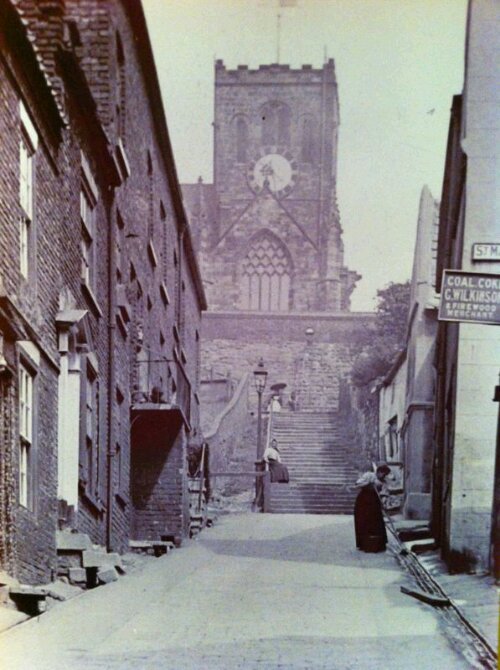
This picture is Edwardian so is about 60 years later than when my ancestors were there but it gives a feel for the place. This upper part of the street is called Church Stairs St. for obvious reasons. The original flight of steps dates back to the 14th cent but they were replaced later with stone and there are 199 of them. Why didn’t they make one more? Just off the bottom of the picture the street crosses a junction and on the other side becomes St Mary’s St which is the street where my far off ancestors lived for a while. Here’s a present day view of the lower part of the street.
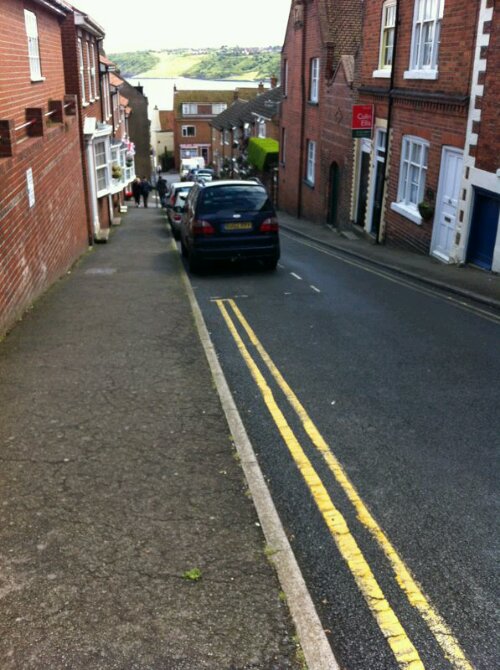
Using the birth records of their children, I know they moved out of this street to London some time between 1841-1846. It seems they moved there to find work and settled on the western side of Isle of Dogs. The street they lived in there is described as “a narrow way with a lay-by to enable two carts to pass each other; it was little more than an access to the iron works on either side.” That has to be narrow if they had to make a lay-by for carts to pass each other. And it has to be for very poor families. I looked on an old map of the area and it looked like living on an industrial estate between two factories. Anyway I stood in St Mary’s St for a few minutes just thinking about the conditions they left and what they thought they were going to and what I know they might have found in such an industrial area. I saw this plaque on the wall of a far newer property in the street where they had lived. I wondered if their parents had possibly heard the man himself preach.
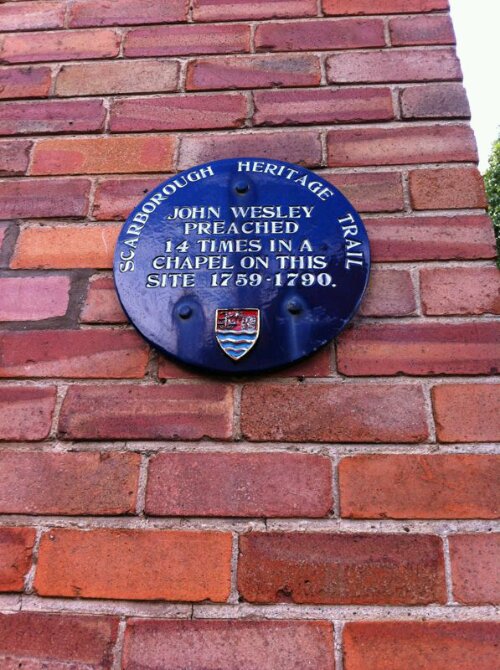
John Wesley had preached at a chapel on the site 14 times between 1759-1790. It means he must have visited the town a number of times as he travelled extensively about the country on horseback. Sometimes he preached in the fields outside of towns because some churches would not let him into their pulpits and sometimes because there were just too many people to fit inside one building.
I went up to St Mary’s Church at the top of the steps, in the old pic, and made my way to the grave yard where I sat down on a bench seat to take in the view across the bay. I ate my sandwiches and looked at the grave I’d sat next to.
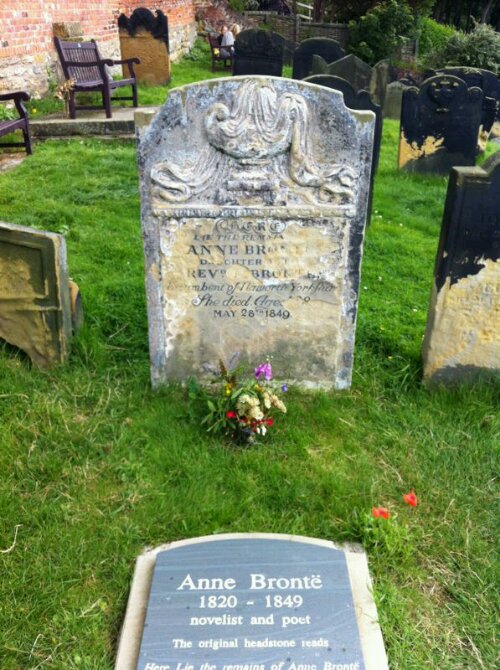
And here’s the transcription as the original gravestone was badly decayed
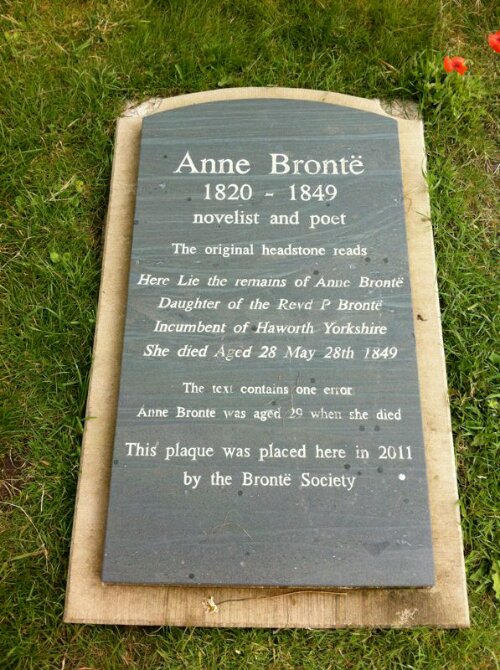
As you can see by the correction on the plain slate version, the original stone mason actually carved the wrong age for Anne. She was born 17.1.1820 & died 28.5.1849 so was definitely 29 years old not 28 as on the original stone. Interesting. Anne wrote the two novels Agnes Grey (which I’ve not read) & The Tenant of Wildfell Hall (which I have, and it’s good).
The Brontës endured tragedy after tragedy. Look below at the ages at death of their mother Maria and all six children:
Maria, mother of 6 Brontë children, aged 38 (Sep 1821)
Maria, aged 11 (6th June 1825)
Elizabeth, aged 10 (15th June 1825)
Branwell, aged 31 (Sep 1848)
Emily, aged 30 (Dec 1848)
Anne, aged 29 (May 1849)
Charlotte, aged almost 39 (Mar 1855)
So in the space of 8 short months Charlotte, having already lost her mother in 1821 & 2 sisters in the space of 10 days in 1825, lost two more of her sisters and brother in the period 1848-9; she survived them by just 6 years. Charlotte’s husband, Arthur Bell Nicholls, lived to 3rd Dec 1906 surviving Charlotte by 51 years!
In this next pic, look at where the church decided to put the refreshments notice. Yep, that’s right, next to the most visited grave of the most famous person in the graveyard! I couldn’t help feeling it looked out of place and perhaps shouldn’t have been there.
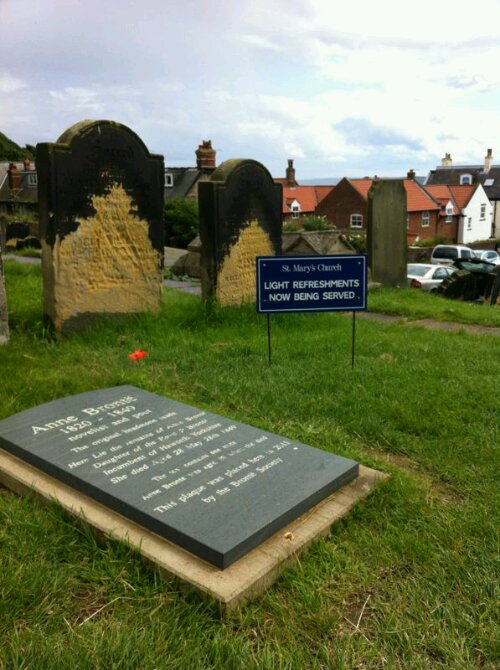
I did, though, go and look inside the church, where my ancestors married, and then ended up buying a cup of tea and scone and chatting to the two ladies serving. I wondered if some kind of subliminal message had reached me from that notice in the graveyard! It was here that I got my old photo postcard. As I walked back down the hill I came to this scene and fully expected the sea gulls to fly away as I approached. They didn’t. It meant I got close enough for this photo. As I went into the shop just to the left of the blue car, I was surprised to hear a voice say, “I hope you’re not disturbing my friends.”
Friends? Yes apparently the lady who owns the shop has been feeding one of these birds since he was a baby! He comes every day, sometimes with a friend, to get some food from her. She calls them her “boys”. I’m not that good on determining the gender of gulls so I didn’t know if they were “boys” or “girls”. I’ll bet she shop lady is not popular with the car owners. Remember the post about bird droppings; the birds are standing on a silver car and silver formed only 3% of car colours which get hit. They appear to have ignored the blue one and yet blue comes second in the table of colours most hit. Perhaps my photo disproves the theory although when I looked at the roofs they hadn’t done any droppings so I wasn’t sure what to conclude.

As I walked back towards the town centre I saw this little alleyway with its name carved into the stone arch. I’ve not seen that done before. Didn’t seem like a route to be taken during the hours of darkness even today. Despite its name implying some delusion of grandeur (palace) I did wonder just what kind of life existed in alleyways like this 200 years ago.
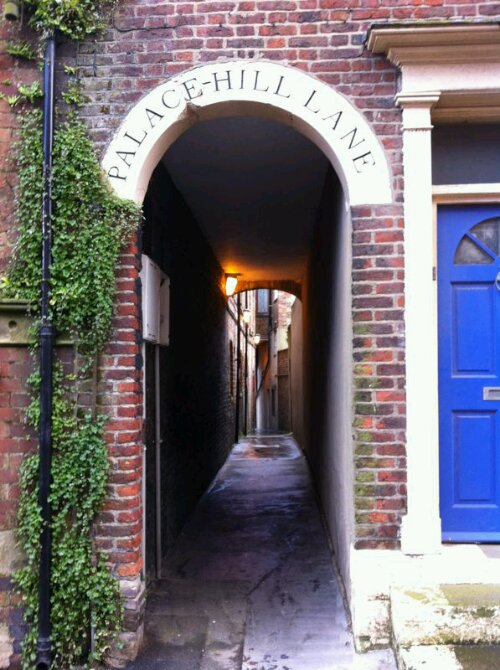
A little bit further back into the town centre, at the top of the cliffs overlooking the beach was this.
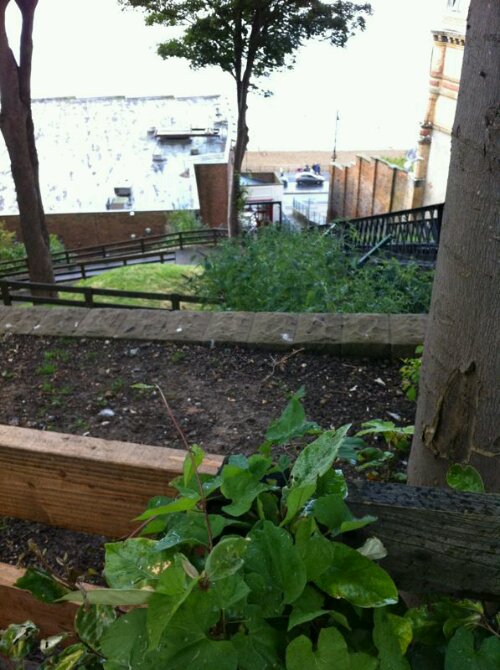
To the right of the pic is the steeply-angled railway down to the beach and here is one of the carriages. It’s called a cliff railway or funicular railway.
Here’s the entrance just to the right of the picture above. Thanks to Wikipedia for this one as mine didn’t come out.
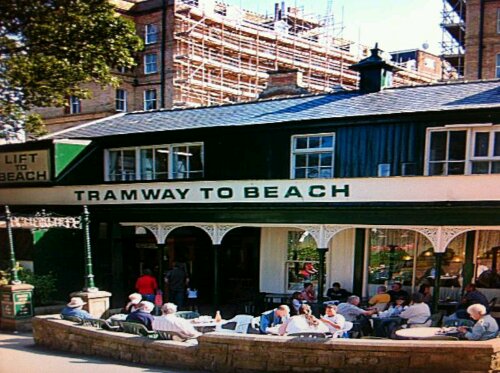
And so it was time to hit the road. I had to return to the Youth Hostel to pick up my gear and drive home. It had been a good day. I liked Scarborough. I will go back.
No comments:
Post a Comment